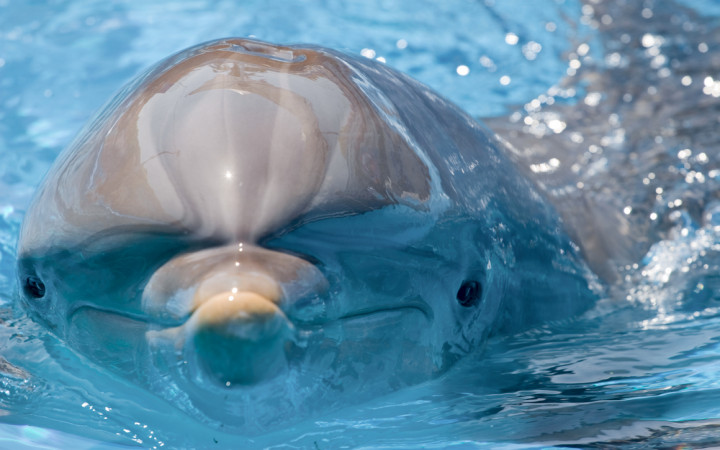Today’s Wonder of the Day was inspired by HeidI Sue. HeidI Sue Wonders, “What’s the difference between a dolphin and a porpoise?” Thanks for WONDERing with us, HeidI Sue!
People have long been fascinated with those playful and intelligent sea creatures we call "dolphins" and "porpoises." Although some people think dolphins and porpoises are basically the same, you might be surprised to learn they are quite different creatures.
If you haven't seen them nose to nose, then it can be difficult to tell the difference between dolphins and porpoises. This is because they can look quite similar, and they do share many characteristics.
For example, both dolphins and porpoises are mammals. Although they both live in the ocean, neither dolphins nor porpoises are fish!
Like all mammals, they have lungs instead of gills, so they breathe air. They also give birth to live young and nurse them after they're born.
Porpoises and dolphins are both members of the same scientific order, Cetacea. Cetacea includes all whales, which are relatives of dolphins and porpoises.
Dolphins and porpoises are also both members of the same scientific suborder, Odontoceti, which includes all of the toothed whales. All members of Odontoceti can also "echolocate," which means detect objects around them using sound echoes.
Porpoises and dolphins part ways at the level of scientific family, though. Porpoises are part of the scientific family Phocoenidae, while dolphins are part of the Delphinidae family. When you concentrate on the differences at the family level, dolphins and porpoises can seem quite different.
There are definite, yet subtle physical differences between the two aquatic mammals. Porpoises tend to be smaller than dolphins.
While dolphins can be 10 feet long (or longer!), porpoises are rarely longer than 7 feet. Dolphins also tend to be leaner and sleeker, while porpoises are more compact and often look chubby in comparison.
Dolphins usually have beak-like, pointed snouts, while porpoises have blunt, rounded noses. Porpoises have triangular dorsal fins, like a shark. Dolphins, on the other hand, have dorsal fins that are more curved like a wave.
The teeth of the two animals offer an easy way to tell them apart. Porpoise teeth are flat and rectangular. Dolphin teeth are cone-shaped.
While the physical differences between dolphins and porpoises can be subtle, the differences in the way they behave are more obvious. Dolphins live in large groups and show little fear of humans. They are outgoing and will often interact with humans and even swim alongside boats.
Porpoises, on the other hand, live in small pods of two to four animals and are quite shy. They rarely approach boats or people. In fact, you rarely see them at the surface unless they're coming up to breathe. If you've ever seen an animal at a marine show, it was almost certainly a dolphin, not a porpoise.
The life expectancy of dolphins and porpoises is also quite different. While most porpoises only live 15 to 20 years, dolphins can live up to 50 years or more. Scientists believe this difference may be caused by the fact that porpoises reproduce faster than dolphins and it takes a toll on their bodies.
One last difference to note is that dolphins produce sounds that humans can hear. Many people have seen firsthand how “talkative" dolphins can be. Porpoises, on the other hand, make sounds that humans cannot hear.
Standards: CCRA.L.3, CCRA.L.6, CCRA.R.1, CCRA.R.2, CCRA.R.4, CCRA.R.10, CCRA.SL.1




